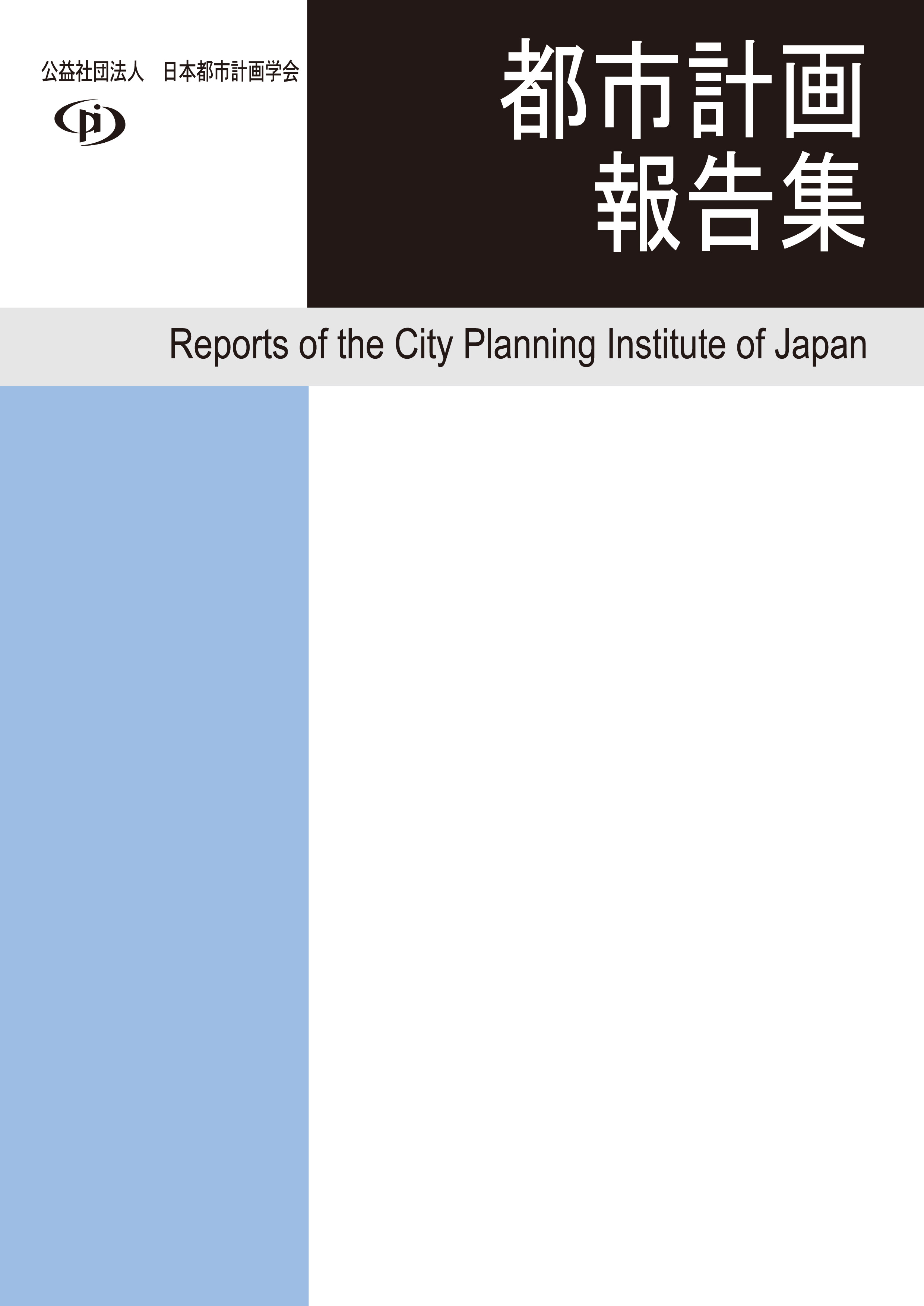
- Issue 4 Pages 102-
- Issue 3 Pages 81-
- Issue 2 Pages 56-
- Issue 1 Pages 1-
- |<
- <
- 1
- >
- >|
-
The case study of Toyohashi citySangryeol Ma, Akira OhgaiArticle type: research-article
2003 Volume 2 Issue 3 Pages 81-86
Published: December 30, 2003
Released on J-STAGE: September 01, 2022
RESEARCH REPORT / TECHNICAL REPORT FREE ACCESSThis paper aims to examine the actual conditions of developed areas in the urbanization control area of Toyohashi city. For this, the distributions and development factors of these areas are investigated by using some quantitative methods. The results are as follows. 1) Most of developed areas are located near trunk roads and urbanization promotion area. 2) Accessibility to railway stations, primary schools existing settlements and category 2 shopping centers influences the development. Finally, the developed areas are classified into 7 types, and the characteristics of them are described.
View full abstractDownload PDF (1149K) -
Kayoko YamamotoArticle type: research-article
2003 Volume 2 Issue 3 Pages 87-90
Published: December 30, 2003
Released on J-STAGE: September 01, 2022
RESEARCH REPORT / TECHNICAL REPORT FREE ACCESSLake Biwa is the largest Lake in Japan and presently supplies some 14 million people in Keihanshin metropolitan area with drinking water, making it the single most important source of water in Japan. In order to prevent the water pollution and the advance of eutrophication of Lake Biwa, soap promotion movement had been promoted from the second half of the 1960s in the Lake Biwa region. Furthermore, many citizens and residents organizations aiming at environmental conservation have been established by present. In the Lake Biwa Comprehensive Conservation Plan (LBCCP, Mother Lake 21 Plan, 2000- ), the environmental conservation at the river-basin level is promoted. Therefore, this study aims at viewing typical examples of environmental partnership activities at the river-basin level, after surveying about the present condition of the activities for environmental conservation in the Lake Biwa region.
View full abstractDownload PDF (78K) -
Nobuhisa TairaArticle type: research-article
2003 Volume 2 Issue 3 Pages 91-94
Published: December 30, 2003
Released on J-STAGE: September 01, 2022
RESEARCH REPORT / TECHNICAL REPORT FREE ACCESSDensely Inhabited Districts (DID) of 22 cities diminished during the last 30 years and DID of some one-fourth of cities shrank during the last ten years along with population decrease. To become more compact is defined as that the population share of DID against the whole city increases and is classified into 5 types. Out of 75 compacted cases in 1990’s, 43 cases fall into type 5 which increases the area and population of DID but decreases population density of DID. There are only 4 cases where net population of DID increased by over one thousand during a decade. Although the concept of compact city has been paid more a ttention, the real cases are quite limited in Japan.
View full abstractDownload PDF (228K) -
A case of study in Seoul, KoreaHirosi Miwa, Kenji Kanbayashi, Eungjoo KimArticle type: research-article
2003 Volume 2 Issue 3 Pages 95-101
Published: December 30, 2003
Released on J-STAGE: September 01, 2022
RESEARCH REPORT / TECHNICAL REPORT FREE ACCESSThe purpose of this study makes clear of Law and Master basic plan with Upgrading of Environment for Walker of Seoul city. This paper consists of four sections. Section 1 describes the meaning of Law prescribed Right of Walk, and Section 2 advices a new-plan, and Section 3 collects a strong point of there, and Last reports the point at issues.
View full abstractDownload PDF (303K)
- |<
- <
- 1
- >
- >|